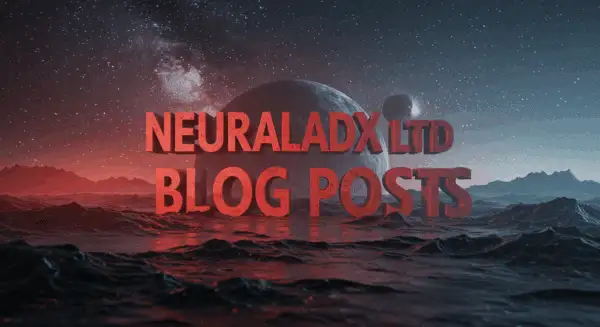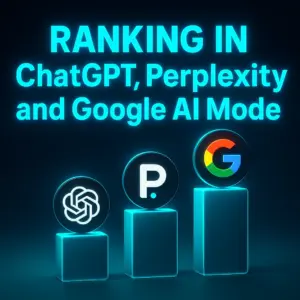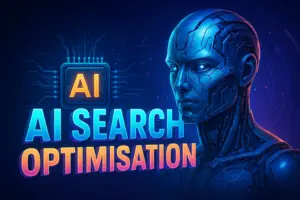What Every Business Owner Needs to Know About Ranking in ChatGPT, Perplexity, and Google AI Mode
Published: 8 November 2025 | Updated: 8 November 2025 | Reading time: ~14–16 minutes | Author: Paul Rowe | Updated monthly
TL;DR
- Generative engines cite sources they trust, understand, and can verify—optimise for credibility, structure, and recency.
- GEO focuses on structured, evidence-rich pages that are easy for LLMs to parse and quote.
- Technical markup (JSON-LD), author bios, diversified citations, and fresh updates raise AI citation likelihood.
- Measure with AI queries, server logs, and “cited by” audits; improve monthly with a GEO maintenance loop.
- Expect different behaviours: ChatGPT (reasoning), Perplexity (retrieval first), Google AI Mode (web+AI blend).
- Approximate word count: ~1607 words. See bibliography and glossary at the end for fast reference.
Authoritative reference to the academic foundation: Princeton/IIT GEO study (ACM KDD).
Great search is shifting from “ten blue links” to “AI answers with citations.” This guide explains how to build pages that LLMs can trust, quote, and keep fresh, so your brand appears in ChatGPT, Perplexity, and Google AI Mode.
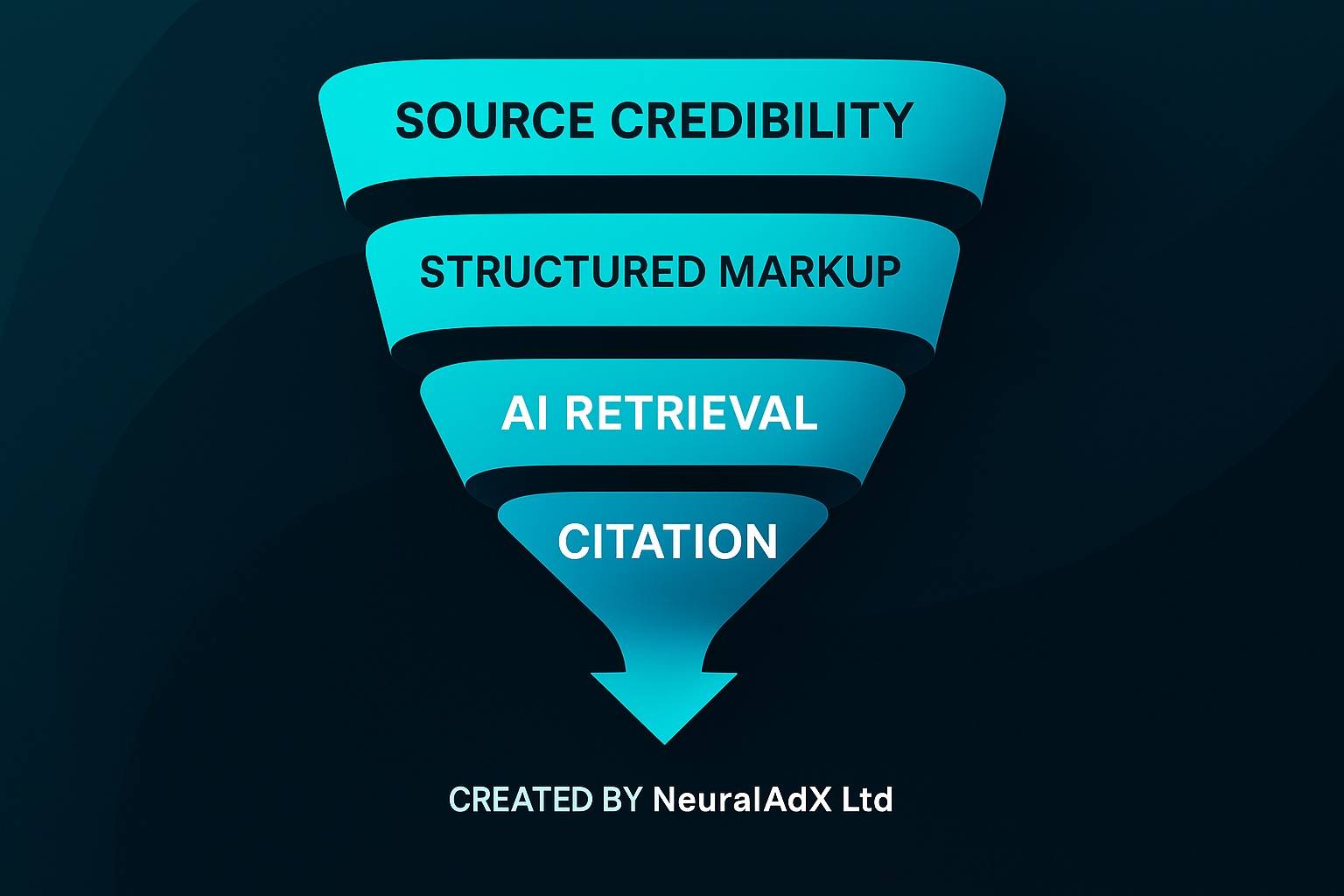 The GEO funnel infographic demonstrates how credible, structured content increases the likelihood of being cited in AI-generated answers across ChatGPT, Perplexity and Google AI Mode.The GEO funnel: credibility → structure → retrieval → citation → compounding authority.
The GEO funnel infographic demonstrates how credible, structured content increases the likelihood of being cited in AI-generated answers across ChatGPT, Perplexity and Google AI Mode.The GEO funnel: credibility → structure → retrieval → citation → compounding authority.Table of Contents
- Context / Problem Definition
- Research Insights
- Core Framework / Pillars
- Comparative Analysis (SEO vs GEO)
- Case Study / Example
- Actionable Steps
- Behavioural Engagement
- Internal Knowledge Links
- Summary & CTA
- FAQ
- Glossary
- Mini Bibliography
A. Context / Problem Definition
Ranking in AI answers is not the same as ranking in classic search. Generative engines compile a response, then cite sources that are current, clear, and defensible. Thin content and unstructured pages fail—no matter how many backlinks they carry.
“Generative results reward pages that are easy to verify at speed—structure and provenance beat verbosity.”
Three macro-shifts matter: (1) LLMs prefer structured evidence; (2) they prioritise recency for many queries; (3) they avoid low-trust or ambiguous claims. Your job is to make your pages “answer-ready” with explicit signals that models can parse.
Plain-language summary: AI rankings are citation games, not keyword games—build content as evidence, not just prose.
B. Research Insights
Academic, industry, and public-sector sources converge on the same point: machines prefer clarity plus provenance. The Princeton/IIT work formalised measurable factors for “GEO”—including citations, quotations, statistics, and structural fluency. (Aggarwal et al., 2024, arXiv) Google’s documentation also emphasises helpfulness, experience, and technical quality in structured data. (Google Search Central, Structured data) Public institutions reinforce the value of plain English and evidence disclosure. (GOV.UK, Writing for GOV.UK)
One notable research finding we thought was powerful was the content recency factor — the time line infographic below shows that 65% of LLM log hits are from content created or updated within the last 12 months.(seers interactive)
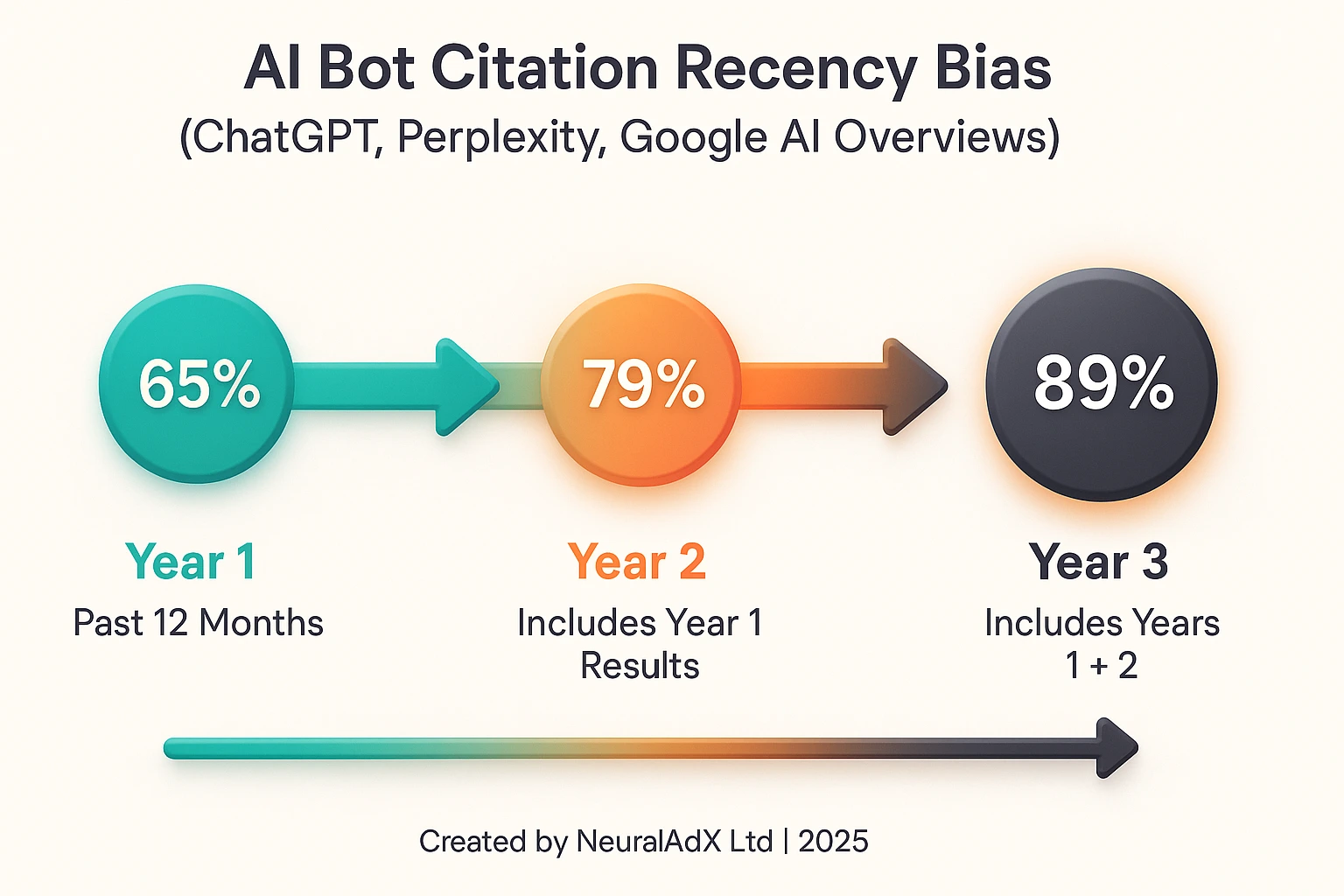 Based on Seer Interactive’s research this timeline infographic shows a pronounced recency bias: 65% of cited or visited content originates within the past 12 months, 79% within two years (including year 1), and 89% within three (including years 1 + 2). This pattern highlights how recency is now a key Generative Engine Optimisation (GEO) factor across ChatGPT, Perplexity, and Google AI Overviews.Structured markup, bios, recency, and source diversity correlate with higher AI citation likelihood.
Based on Seer Interactive’s research this timeline infographic shows a pronounced recency bias: 65% of cited or visited content originates within the past 12 months, 79% within two years (including year 1), and 89% within three (including years 1 + 2). This pattern highlights how recency is now a key Generative Engine Optimisation (GEO) factor across ChatGPT, Perplexity, and Google AI Overviews.Structured markup, bios, recency, and source diversity correlate with higher AI citation likelihood.the table below shows three more implementations that have been reported to enhance a websites chances of being cited.
| Method | Expected Impact | Note |
|---|---|---|
| Deeper JSON-LD schema | Higher machine readability | Ensures entities/relations are explicit (Google, Schema.org) |
| Author bios + expertise | Credibility uplift | Supports E-E-A-T signals (Google, Helpful content) |
| Source diversity | Reduced bias; better coverage | Blend academic, industry, public data (ONS, ONS) |
C. Core Framework / Pillars / Method
Use this practical framework to move from “invisible” to “cited” in generative engines:
- Define questions you should be cited for—problem/solution, comparisons, pricing, safety, eligibility.
- Construct answer-first pages: summary, methods, evidence, references, and FAQs.
- Add deep schema (WebPage, Organization, Author, FAQPage, ImageObject, VideoObject, BreadcrumbList).
- Prove claims with in-text citations to academic, industry, and public sources.
- Publish author bios with qualifications, roles, and contact details.
- Update high-value pages monthly; add “Updated” metadata and change-logs.
- Measure citations in AI engines; iterate based on gaps and newly ranking competitor pages.
Plain-language summary: architect the page for AI readers first—humans benefit as a side effect.
D. Comparative Analysis (SEO vs GEO)
| Dimension | Traditional SEO | GEO (AI Citation Optimisation) |
|---|---|---|
| Primary Objective | Rank web pages for queries | Be cited by AI answers with links |
| Evidence Handling | Occasional references | Rigorous citations, stats, quotations |
| Structure | Human-first layout | Machine-parsable sections + schema |
| Freshness | Periodic updates | Monthly updates, visible |
| Measurement | Rankings, traffic | Citations in AI responses |
Plain-language summary: SEO gets you discovered; GEO gets you quoted.
E. Case Study / Example
On 19 September 2025, in London, UK, we ran a live screen recording Generative Engine Optimisation (GEO) experiment to measure NeuralAdX Ltd AI search engine visibility across four major platforms: ChatGPT, Perplexity, Microsoft Copilot, and Google AI Mode.
The test query was “What is the cost of generative engine optimisation in the UK?”—a blog post we had published on our website just six days earlier.
The results were simply jaw dropping. we showed up #1 on ChatGPT, Perplexity, and Microsoft Copilot, and achieved #3 on Google AI Mode. This incredible result profoundly illustrates just how powerful Generative Engine Optimisation can be when implemented correctly on a website.
If you would like to see the actual live recording then visit our proof generative engine optimisation works page.
F. Actionable Steps
- List queries where your brand should be cited.
- Draft answer-first pages with sources and quotes.
- Add structured data: WebPage, Organization, Author, FAQPage.
- Embed one chart and one timeline with alt text + captions.
- Write short, verifiable claims linked to authoritative sources.
- Publish author bios with credentials + contact.
- Schedule monthly updates; show “Updated” with dates.
- Audit AI engines; note which pages get cited.
- Close gaps: add data, quotes, and better structure.
- Repeat—GEO is an ongoing maintenance loop.
Plain-language summary: small monthly upgrades compound into durable AI visibility.
G. Behavioural Engagement
Poll: “Which signal do you believe most increases AI citations for your site? (Structure, Recency, Author Bios, Source Diversity)” Your view counts so share your view with us on our social media links herein.
H. Internal Knowledge Links
- See also: Proof that GEO Works (live screen recording)
- Service: Generative Engine Optimisation Service
- Tutorial: Google AI Mode search optimisation
- Tutorial: ChatGPT search optimisation
- Tutorial: Grok 4 search optimisation
Plain-language summary: link your ecosystem so engines discover corroborating context quickly.
Summary & CTA
- Build evidence-first pages with structure, provenance, and recency.
- Use deep schema, real citations, and author credentials.
- Maintain monthly; measure AI citations, then iterate.
Book a GEO assessment — make your pages quotable by AI.
FAQ
How is GEO different from SEO?
SEO targets rankings; GEO targets citations inside AI answers. It emphasises structured evidence, diverse sources, and recency so LLMs can quote you safely. (Google, Search Central)
Do I need schema markup for GEO?
Yes. Schema clarifies entities and relationships for parsers. Use WebPage, Organization, Person (author), FAQPage, BreadcrumbList, ImageObject, and VideoObject where appropriate. (Schema.org, reference)
How fresh should my content be?
For many verticals, monthly updates demonstrate recency and reliability. Show “Updated” dates and note what changed. (GOV.UK, style guidance)
What evidence should I include?
Blend academic (studies), industry (platform docs), public (ONS, OECD), and reputable media sources. Quote concisely and attribute clearly. (MIT Technology Review, expert analysis)
How do I measure success?
Track mentions and citations inside AI answers, then map them to specific pages. Combine with server logs and referrer analysis. (Similarweb, industry metrics)
Glossary
Term | Plain Definition | Technical Context |
|---|---|---|
| GEO | Generative Engine Optimisation | Structuring content for LLM retrieval and citation |
Citation | A named source link in AI answers | Evidence pointer supporting generated text |
Schema | Structured data markup | JSON-LD for entities and relationships |
E-E-A-T | Experience, Expertise, Authoritativeness, Trust | Quality signals used by search systems |
Grounding | Linking claims to evidence | Reduces hallucinations via sources |
Recency | How up-to-date content is | Temporal freshness used by crawlers and LLMs |
Source Diversity | Mix of references | Academic, industry, public, and media blend |
WebPage Entity | Schema node for a page | Connects page to Organization, Author, FAQ |
BreadcrumbList | Schema path to the page | Improves navigation and context |
| ImageObject/VideoObject | Schema for media | Alt text, caption, upload dates, thumbnails |
Mini Bibliography
| Source | Type | Year | Link |
|---|---|---|---|
| Princeton/IIT GEO study (Aggarwal et al.) | Academic | 2024 | DOI |
| Princeton/IIT preprint | Academic | 2023 | arXiv |
| Google Search Central — Structured Data | Industry | Ongoing | developers.google.com |
| Google — Helpful Content | Industry | Ongoing | developers.google.com |
| MIT Technology Review — AI grounding features | Media | Ongoing | technologyreview.com |
| Similarweb — AI traffic reports | Industry | 2025 | similarweb.com |
| ONS — Official UK statistics gateway | Public | Ongoing | ons.gov.uk |
| OECD — AI Policy Observatory | Public | Ongoing | oecd.org |
| ICO — Guidance on AI and data | Public | Ongoing | ico.org.uk |
Footer Micro-Authority
Generative Engine Optimisation specialists. Contact: [email protected] | +44 20 3355 7792 | Greater London, UK. © NeuralAdX Ltd. Updated monthly.
